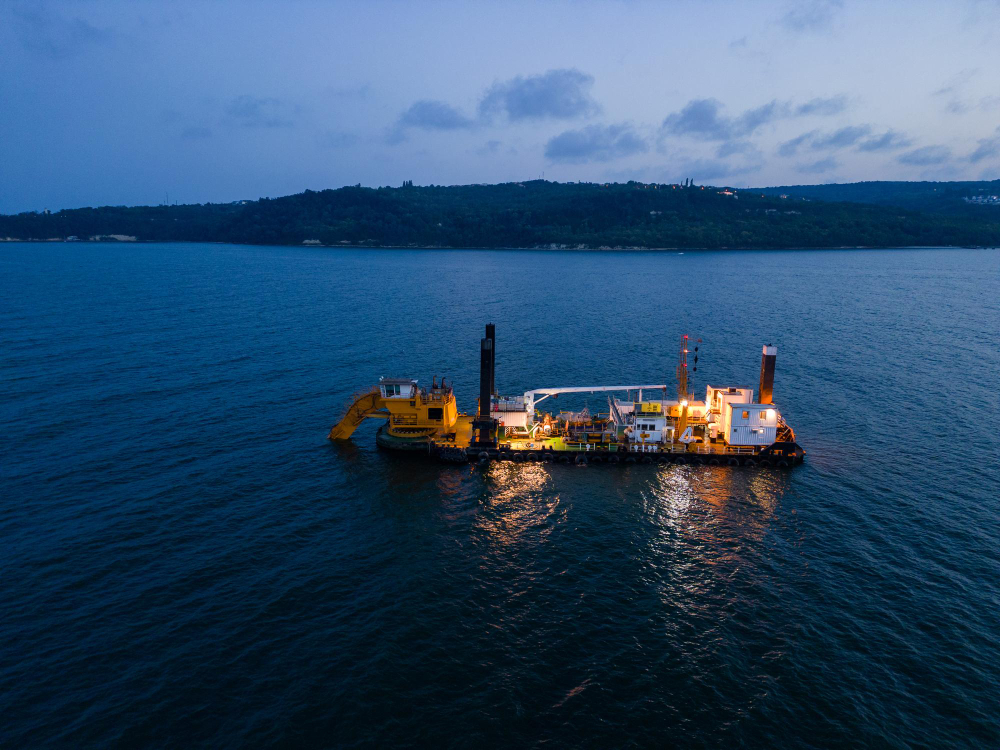The sight of majestic harbors, bustling maritime activity and picturesque coastal landscapes is awe-inspiring. Behind these captivating visuals lies a critical, multifaceted operation known as dredging. The integral components of this operation, namely dredging pipes, are pivotal in facilitating a myriad of benefits for both the economy and the environment. Today, let’s journey through the various techniques and myriad advantages of dredging, a process that plays a key role in shaping our aquatic surroundings.
Different Methods For Removing Sediment
When it comes to dredging, a one-size-fits-all approach simply won’t suffice. Diverse methods are employed based on the environment, the type of sediment and the project’s specific goals.

Detailed Look at Scoop Dredgers
Often employed for smaller, intricate projects, scoop dredgers offer a basic yet effective way to manage sediment removal. They are a practical choice when a delicate touch is required.
- The Versatility of Clamshell Dredgers
Clamshell dredgers, suited for lifting harder sediments such as gravel or clay, operate using a mechanical bucket that resembles a clamshell. These machines offer excellent adaptability for various conditions.
- Expounding the Bucket Dredging Approach
Bucket dredgers feature a continuous chain of buckets that scoop up sediment, making them ideal for extensive projects requiring large-scale sediment displacement.
- Dipper Dredgers in Depth
When you’re dealing with hard-to-access underwater regions, the unique capabilities of dipper dredgers come into play. These specialized machines feature hydraulic arms that extend downwards to gather sediment effectively.
Suction Dredgers For Efficient Sediment Removal
For those seeking efficiency, suction dredgers offer the answer. These machines work by vacuuming up loose sediment and are particularly effective for large-scale projects with the assistance of robust dredging pipes.
- A Look at Cutter Suction Dredgers
These workhorses combine power with precision. With a rotating cutter head to loosen sediment, cutter suction dredgers excel in tasks requiring power and accuracy.
- The Auger Suction Approach in Context
Auger suction dredgers, utilizing a drilling auger to mix sediment with water before suction, are the go-to choice for environmentally sensitive dredging projects.
The Multifaceted Advantages Of Dredging
Dredging is more than a simple act of sediment removal; it’s a powerful driver for progress in various sectors, including economic and environmental.
Expanding Waterways for Bigger Ships
The strategic deepening of harbors and navigational channels through dredging accommodates larger vessels and plays a key role in scaling up international trade opportunities and fortifying economic growth.
Amplifying the Allure of Tourism
The establishment of clean and navigable waterways, along with the creation of visually stunning coastal environments, can substantially attract tourists. This influx of visitors enriches local economies by generating substantial revenue.
Cultivating Diverse Marine Ecosystems
Dredging isn’t just about removal; it’s about creation, too. The activity has the capability to foster the formation of new, abundant habitats that serve as homes for various aquatic species, thereby vastly enriching marine biodiversity.
Breathing Life Back into Oyster Reefs
Dredging activities often contribute to the revitalization of invaluable oyster reefs. These reefs are not just marine ornaments; they are crucial for maintaining the equilibrium of marine ecosystems.
Strengthening and Nourishing Beachfront
The sediment collected via dredging pipes can be repurposed for beneficial use, particularly for the nourishment of eroding coastal areas. This revitalization tactic acts as a natural barrier against the adverse effects of erosion and sea-level rise.
Elevating Environmental Cleanliness
While it may not be the most talked-about advantage, dredging serves a pivotal role in the removal of pollutants and other hazardous contaminants that accumulate over time on the ocean floor, thus contributing to the overall health of marine environments.
The Evolving Landscape of Dredging Techniques
Transitioning to Environmentally Responsible Dredging Methods
With rising global awareness about environmental conservation, the dredging industry is swiftly pivoting toward methods that are efficient, environmentally responsible and sustainable. This paradigm shift aims to minimize ecological impact while optimizing operational effectiveness.
Comprehensive Evaluation of Long-term Consequences
The industry is steadily adopting a more holistic approach by incorporating cumulative effects analysis into their operational protocols. This enables stakeholders to understand the immediate outcomes and the long-term environmental and socio-economic impacts of dredging activities.
Rigorous Testing for Contaminants in Materials like Dredging Pipes
Critical to the evolution of more responsible dredging is the meticulous examination of sediment quality. Collected materials are rigorously assessed for contamination levels utilizing specialized dredging pipes. This ensures that pollutants are correctly identified and managed, safeguarding both environmental and human health.
Final Thoughts
Dredging stands as an essential linchpin in both maritime activity and environmental conservation. Its benefits range from fostering economic growth by enabling larger ships to enter ports, to environmental rejuvenation through habitat creation and pollutant removal. As the field matures, it continues to adopt more sustainable and eco-friendly practices, making it a crucial yet ever-evolving component of our global ecosystem.
Your Next Step in Superior Dredging Solutions
Ready to make your dredging project a resounding success? Bigfoot Pipe And Piling offers top-quality dredging pipes that set the industry standard for reliability and performance. Don’t settle for less—choose Bigfoot for your dredging needs and experience the difference that quality makes. Act now to ensure your project’s success!
